Wood-Mizer ribbon saws can be useful not only in the wood-cutting business. People create a lot of interesting projects out of wood, which they cut themselves on Wood-Mizer bandsaws.
Take Jeremy Harper. This is a man who is used to making something out of nothing. For 20 years he has worked as an arboriculturalist, an occupation that has taken him all over the UK removing unwanted trees and hedgerows, often repurposing potential waste materials and giving them a new lease of life.
But he surprised even himself with a project to build a pergola of greenery in the garden of his family home.
"The idea came from a trip through Norway and Iceland, where my wife and I saw quite a few green-roofed structures on sheds and commercial buildings," he said. "It gave me the idea that I wanted one at home."
Indeed green roofs are very popular in Northern Europe and Germany. Several research centers are engaged on roof garden developments since the 70s. Such designs have proven to have several environmental advantages, particularly important for cities. Green roofs accumulate clean rainwater, preventing it from mixing with sewage and thus reducing the strain on sewage systems. They protect against noise in the sense that the soil absorbs low-frequency noise, while plants absorb high-frequency noise. In addition, they clean the air and protect buildings from overheating, reducing air conditioning costs. Finally, it looks simply beautiful!
Although green roofs are more expensive to build than normal roofs, these costs are fully offset over their useful life - much longer than normal roofs, as the gardens protect the roof structure from climatic influences.
There are intensive and extensive green roofs. Intensive ones are more like gardens, with real trees growing on them, which require a fairly deep layer of soil for roots. These roofs are usually open to the public and professional gardeners work on them. Extensive ones are also very cheap in terms of running costs. The topsoil is thin, the simplest plants, chickweed or even grass are planted in it. The only thing they need is to add special non-liquid fertilizers once a year to the soil. These roofs can be admired from a distance, they are not open to visitors.
Such an extensive roof is what Jeremy Harper set out to build. From the idea to the start of construction took very little time.
"It was my first attempt at creating something like this in the garden and I made space by removing the grandchildren's play equipment as they are now grown up, then roughly put some dimensions on paper. I thought about what size I wanted and decided on 8" x 8" (about 20 cm x 20 cm) uprights and 4" x 2" (about 10 cm x 5 cm) cross beams."
He was contracted on a demolished industrial facility to clear and preserve the remaining trees and to remove any remaining wooded area that was no longer needed. A hedge of Leylandii and, instead of cutting it as firewood, decided to process it to the size needed for the pergola.
"I wanted something for effect, so I went for the biggest prisms possible and everything was selected from the biggest trunks. The beams we cut from what was left."
Atop the structure is the green, wild-planted roof that exploded with color in a warm, wet English spring.
"The wife found a display stand in a garden center and we went for herbs like thyme, rosemary and even strawberries.
"We put wooden blocks around the roof to avoid stepping on the plants and then threw a wildflower mix on the ground. I wasn't expecting it to overbloom but it produced a really really colorful mix and so far it's worked with poppies, cornflowers and daisies especially ."
Jeremy says he was lucky enough to have the materials on dithe right position and tools for the job. He regularly cuts wood for customers - creating custom sizes suitable for use in construction, furniture and lathe machining. He uses a Wood-Mizer LT40 mobile bandsaw that he bought second-hand nearly five years ago.
"We felt the LT40 was about the biggest we could buy and afford for work," he said.
"We've been able to cut massive pieces of wood with it - wood you never thought you could handle. We do jobs on a variety of scales, from small jobs clearing limbs to clearing whole areas, so we bought the LT40 to offer a wood-cutting service and to be more proactive in the jobs we can do. It always seemed like the right model to choose and it never let me down. We have some memorable woodworking memories with him."
She now has a permanent structure in the garden to remind her of those moments.
LT40 is housed in a barn across the street from Jeremy's home. His business owns five cranes for moving lumber to sites, but he says that for this particular project he didn't make his job any easier.
"We moved everything by hand!" he said. "From the wood part of the job, the uprights were the heaviest, but the gravel we had to carry up the ladder to deposit on the roof was the most labor-intensive part.
"Cutting all the wood didn't actually take too long because we knew what we wanted. The worst thing you can do when you're cutting is to sit and think, so you make a list of what you have to cut first and then you can get on with the job."
"At first we wanted the uprights perfectly straight, but in the end we went with an un-trimmed edge so as not to look too machined. The decision that took the longest was what shape to shape the ends of the beams. We tried a lot of different options until we settled on the one we have."
The vertical posts are buried in the ground and secured in the soil. They carry the weight of the structure that crosses the beams.
One-inch planks are laid on the joists forming the base of the green roof, waterproofed with pool liner and then protected with a geotextile layer to keep the roof waterproof.
Jeremy then laid down the heavy gravel - 30mm bags of stone designed to improve drainage and then topped with a root barrier over which he laid a layer of mulch to help retain moisture. The green roof physically grows in a mixture of wood chip compost and a layer of sifted topsoil.
To improve drainage, drainage points for flat roofs are glued to the liner and the runoff is carried on chains and watered by plants at ground level.
Instead of a flagstone paving of interior courtyards, Jeremy again turned to the bandsaw and cut round sections of Leylandii to complement the natural appearance of the structure.
The end result is not only impressive, it's also something the whole family can enjoy - whether relaxing below or gardening above.
"I'm not a gardener - my wife is very good at it - but I've become a bit of a gardener myself with my green roof and I can see that I've been successful. I usually spend a couple of hours up there on the weekends and I'm always trying to take pictures to see how it changes from season to season."
Having the main material available and the LT40 bandsaw LT40 for cutting wood allowed the project to be very cost efficient.
Jeremy tells us: "I worked out how much it would cost to build the structure out of green oak and came to about £3,000. All it cost us was a bit of fuel and time."
"I'm absolutely delighted that it's better than I thought it was going to be." Apparently Wood-Mizer felt the same way because Jeremy entered the pergola into the Wood-Mizer 2015 Wood-Mizer Customer Project Competition and won third place!
According to Ben Pike, Eve Communications
Mr. Jeremy Harper's green-roofed pergola won third place at the Wood-Mizer "MY PROJECT" 2015 Wood-Mizer competition in Europe
























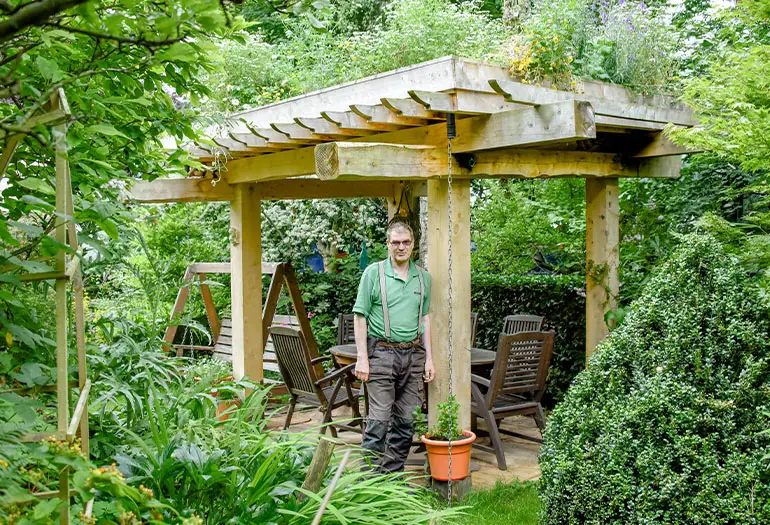
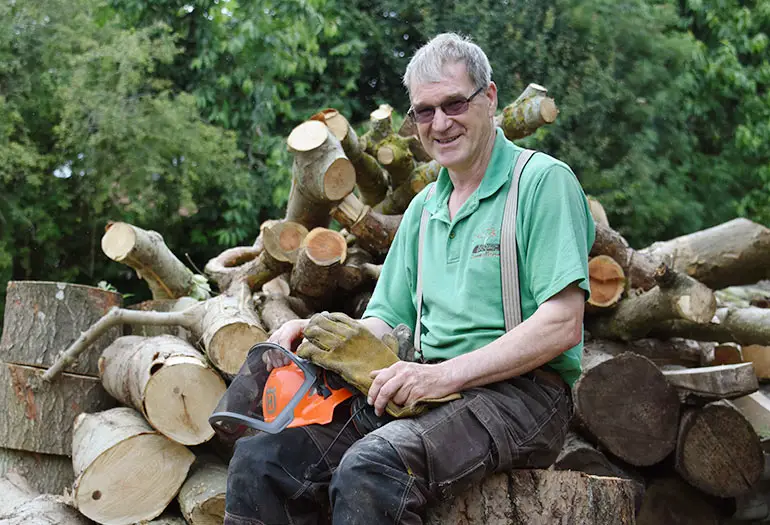

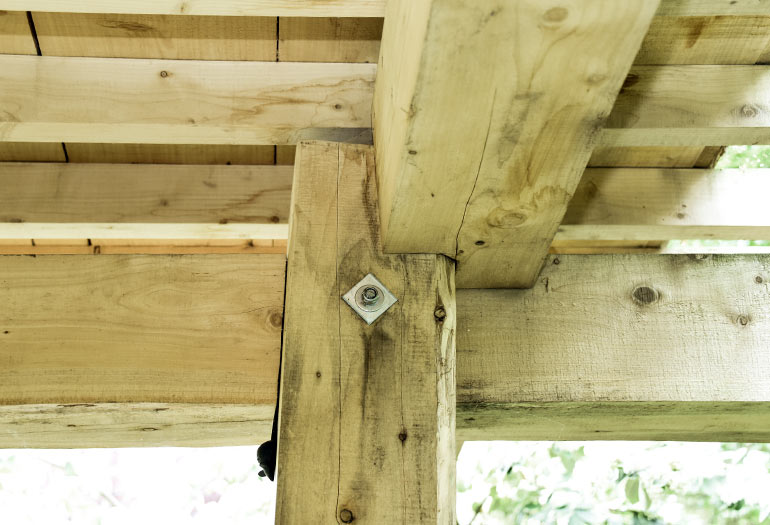

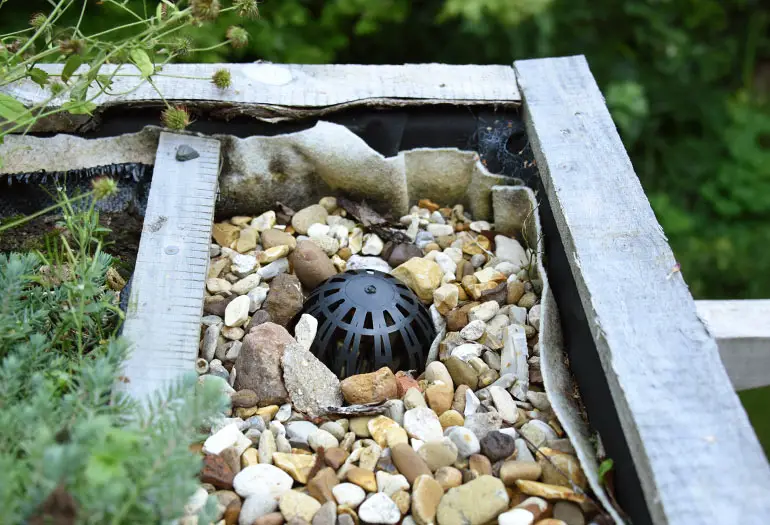
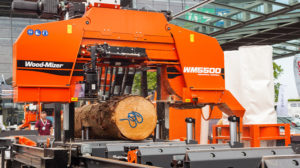
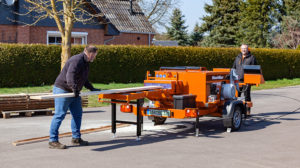


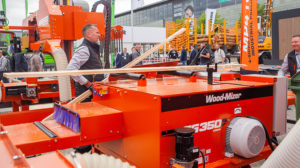
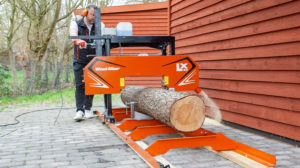






Add comment